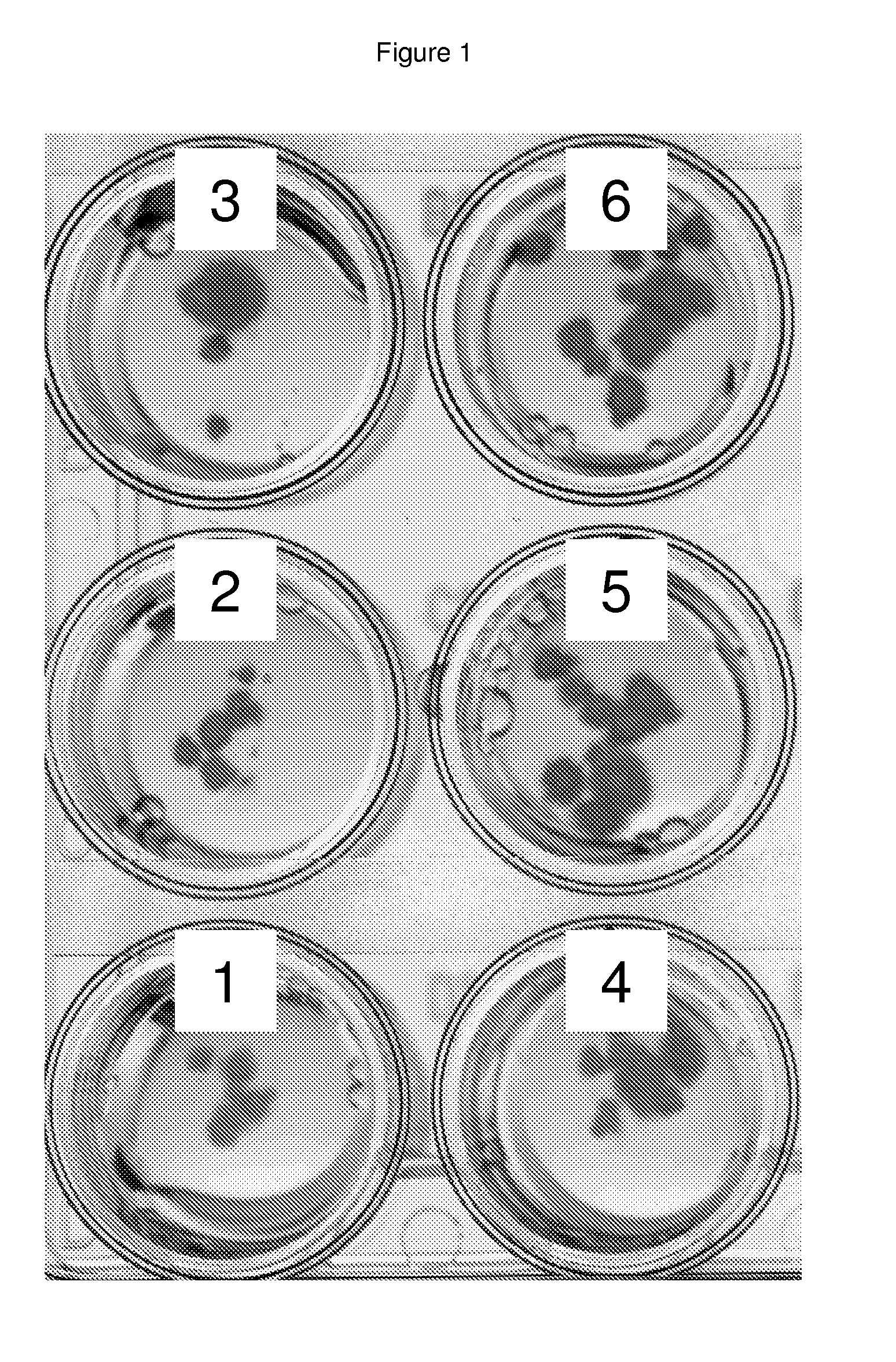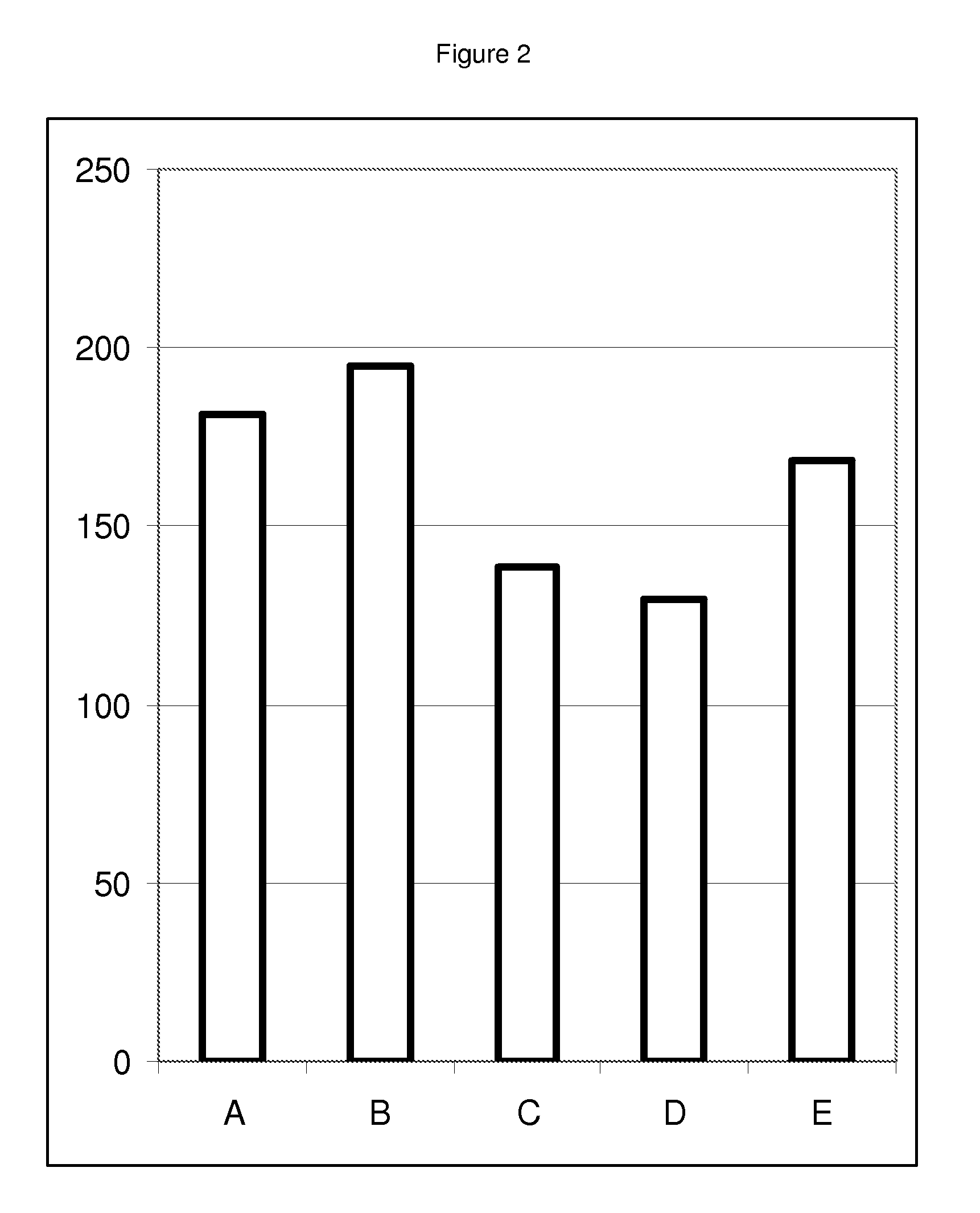High throughput transfection of filamentous fungi
a filamentous fungus, high-throughput technology, applied in the field of filamentous fungi transfection, can solve the problems of 100+ gene modification, not leading to any commercial application, and only incremental improvement, and achieve the effect of efficient random integration, efficient homologous recombination, and efficient dna integration
- Summary
- Abstract
- Description
- Claims
- Application Information
AI Technical Summary
Benefits of technology
Problems solved by technology
Method used
Image
Examples
example 1
Transformation of Penicillium chrysogenum Using Microtiter Plate
[0043]Penicillium chrysogenum protoplasts are prepared as disclosed WO199932617 and WO199846772. They were either stored on ice (during the day) or at −80° C. To each well in the Microtiter Plate 4 μl of DNA solution (0.25 μg / μl pHELYA1, see WO 04 / 106347) with the right concentration is added. pHELYA1 is an integrative vector with the amdS selection marker gene, encoding acetamidase, enabling transformants to grow on media with acetamide as the sole nitrogen source. Next a nuclease inhibitor (Aurintricarboxylic acid, ATA, 20 mM), the protoplasts and a polymer (Polyethylene Glycol, PEG, 200 g / l in STC; sorbitol, 0.8 M; CaCl2, 25 mM; Tris, 25 mM; pH 8.0) are added, according to Table 1.
TABLE 1Components for Penicillium chrysogenum HTT in Microtiter PlatesComponentDeepwell 96-wells MTP (in μl)DNA4ATA2.5Protoplasts (1 × 108 / ml)25PEG 20%12.5
The addition is done manually (pipetting) and automated (for example with a Multidrop...
example 2
Transfection of Aspergillus niger in Microtiter Plate
[0044]Aspergillus niger protoplasts for MTP transfection are prepared according to the protocol for transformation in WO199932617 and WO199846772, resulting in a protoplasts suspension of 1×108 protoplasts / ml in STC. These protoplasts are transformed using either undigested or linearized donor DNA. Transfection and subsequent selection of transformants is performed as in Table 2, listing the individual steps of the Aspergillus niger MTP transfection protocol. Transformants are plated in MTP's containing SRM (see WO199932617 and WO199846772) supplemented with 150 μg / ml phleomycin and grown for 6-7 days at 30° C. The resulting transformants are transferred from the 1st selection plate to 2nd selection plates (PDA supplemented with 150 μg / ml phleomycin; see WO199932617 and WO199846772) and subsequently grown for 5 to 7 days at 30° C. Copies of the 2nd selection plates are made on PDA in MTP (preferably with phleomycin) using a 96-pin...
example 3
Co-Transfection of Penicillium chrysogenum in Microtiter Plate
[0045]Penicillium chrysogenum protoplasts were prepared as disclosed in WO199932617 and WO199846772 and stored on ice or at −80° C. To each well in the Micro Titer Plate 4 μl of DNA solution (either 0.25 μg / μl pHELYA1; or a mixture of 0.25 μg / μl pHELYA1 and 0.25 μg / μl pISEWA, see WO 04 / 106347) with the right concentration was added. The pHELYA1 vector and use is as described in Example 1. pISEWA is an integrative vector containing the Streptomyces clavuligerus gene cefE, encoding expandase, an enzyme that can expand the five-membered penicillin ring into the six-membered cephalosporin ring. Selection on acetamide was used to select transformants, followed by a cephalosporin specific bioassay to determine the co-transformation efficiency. The procedure from Example 1 was followed. Thus, to the DNA the nuclease inhibitor ATA, the protoplasts and the 20% PEG were added, according to Table 1. A few variables were changed, inc...
PUM
| Property | Measurement | Unit |
|---|---|---|
| volume | aaaaa | aaaaa |
| volumes | aaaaa | aaaaa |
| volumes | aaaaa | aaaaa |
Abstract
Description
Claims
Application Information
 Login to View More
Login to View More - R&D
- Intellectual Property
- Life Sciences
- Materials
- Tech Scout
- Unparalleled Data Quality
- Higher Quality Content
- 60% Fewer Hallucinations
Browse by: Latest US Patents, China's latest patents, Technical Efficacy Thesaurus, Application Domain, Technology Topic, Popular Technical Reports.
© 2025 PatSnap. All rights reserved.Legal|Privacy policy|Modern Slavery Act Transparency Statement|Sitemap|About US| Contact US: help@patsnap.com


